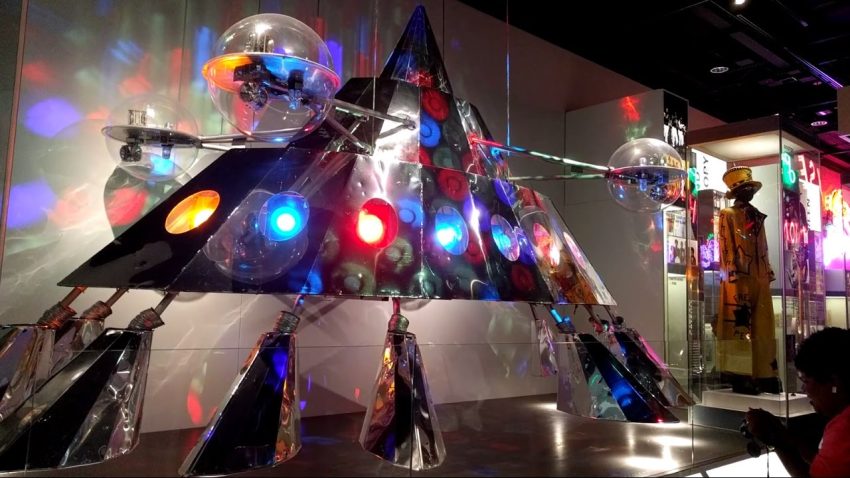On January 13th, we conversed with Dr. Dwandalyn Reece, Curator of Music and Performing Arts at the National Museum of African American History and Culture. Dr. Reece, whose list of accomplishments stretches far beyond my initial research, is extremely well versed in the field of musicology. After obtaining her master’s degree, Dr. Reece worked at Henry Ford Museum, Motown Museum, Louis Armstrong House and Archive, New Jersey State Museum, and additional community projects in New York. She subsequently went back to school to get her doctorate, worked at the National Endowment for the Humanities for 10 years, and then, finally, she arrived at the Smithsonian

A glimpse into the Musical Crossroads exhibit, curated by Dr. Dwandalyn Reece
By no means did she take the fast-track to her current position. But, nevertheless, Dr. Reese was appreciative of the path she took. She credited her success at the NMAAHC to the zigzagging ride of diverse experiences she’s had in her career. She expressed that the Musical Crossroads exhibit “would have been different if I had done it earlier in my career.” It’s the summation of her experiences that developed a value system that she brings to her work as a curator: values like “inclusivity, elevating the voices of those who have not been heard, and lifting up communities.” As someone who will be transitioning into a career in the arts field, I am very appreciative of Dr. Reece’s insight. It is becoming more apparent to me that experiential learning is key to having a more holistic and empathetic approach to my profession.
I like to think of Dr. Reece’s job as symbolic of a megaphone. She seeks out unfamiliar stories about African-American music and sets out to amplify them. Like a true Smithsonian employee, she values inclusivity, elevating the voices of those who have not been heard, and representing a full and true America.
With that being said, she expressed that the tension in our capitalist system is to acknowledge only the superstars, when in fact, the status of the individual has no correlation to their level of talent. Many times, we know about famous people simply because “they got the light of day.” Thus, the story of music must be expanded to include more than just the greats. Dr. Reece emphasized this when she made the resounding distinction that the “collections are not a hall of fame.” While there are prominent artifacts to showcase, there are also significant communities and stories that deserve to be featured.

Chuck Berry’s red Cadillac, found at the National Museum of African American History and Culture
Dr. Reece made another unique distinction that artifacts are much richer when you learn how they resonate with the world. The museum recognizes its artifacts as being more than linked to famous ownership. As covered by Dr. Reece, Chuck Berry’s car represents so much more than a red Cadillac owned by a legendary guitar player and pioneer of early rock and roll. While it symbolized the musician’s success as well as his ability to take control of his career in an era of racial segregation, this lavish car also has implicative meaning to an entire culture. For the African American population of America, it indicated a sense of liberation and freedom from the confines of a racist society.
During our meeting, Dr. Reece expressed her continual struggle with local, state, and federal governments to legitimize the value of music and the arts in our communities. I was surprised, yet pleased to hear that a federal institution would advocate and vocalize a desire for change just as other private and community-based institutions do. According to Dr. Reece, “when you’re fighting for the value of the arts, it helps to be able to tell compelling stories.” In Dr. Reece’s fight, her curations do all the talking.
My overall understanding and faith in the arts were supplemented by our discussion with Dr. Reece. I am continually thrilled to see that there are so many avenues by which someone can engage in the arts and I am equally inspired by the NMAAHC’s efforts to uplift communities, of which was previously unbeknownst to me. I feel very grateful to have talked with such a scholarly and skillful individual and look forward to visiting the National Museum of African American History and Culture in the near future.
